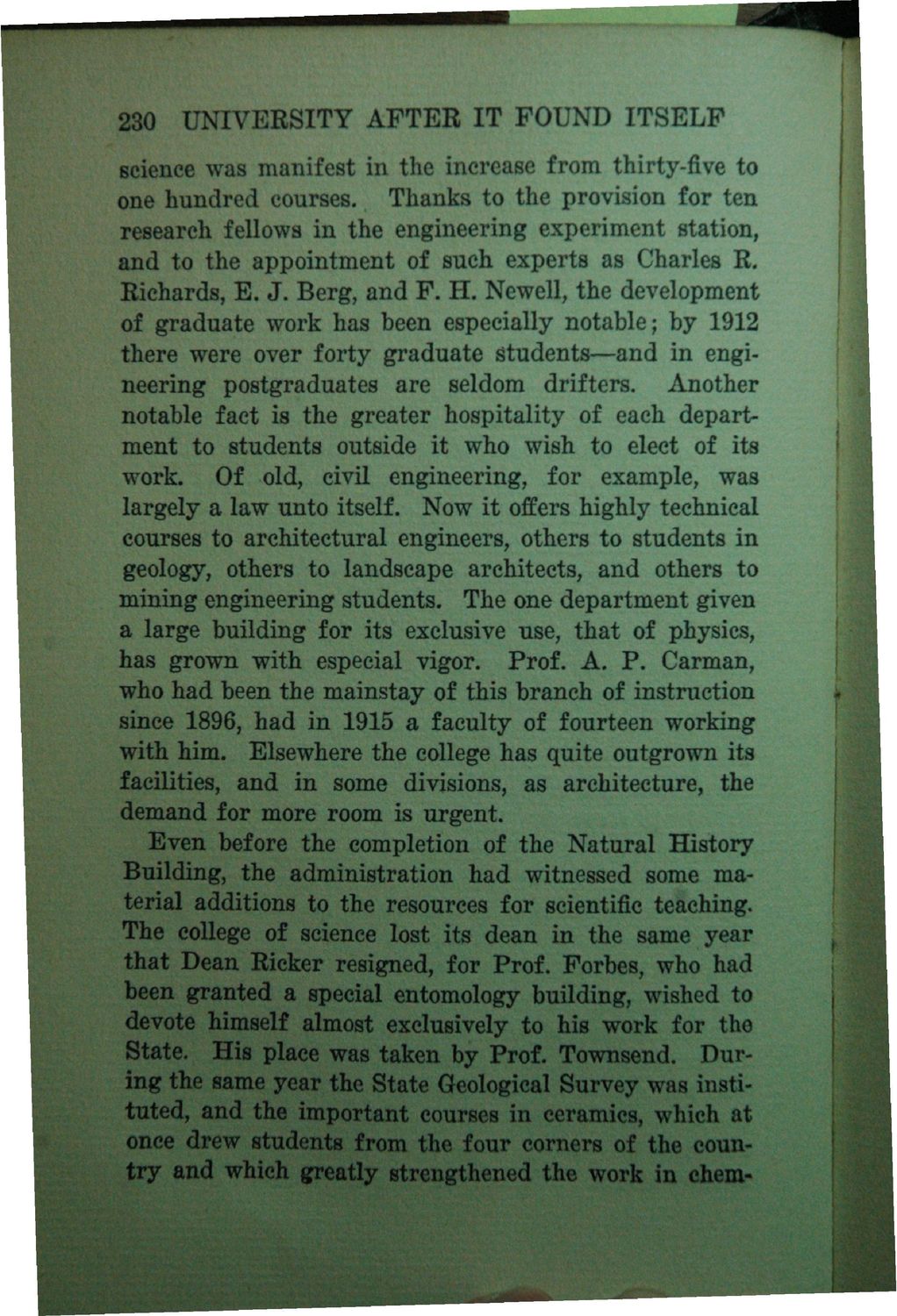| |
| |
Caption: Book - History of the University (Nevins)
This is a reduced-resolution page image for fast online browsing.

EXTRACTED TEXT FROM PAGE:
230 UNIVERSITY AFTER IT POUND ITSELF science was manifest in the increase from thirty-five to one hundred courses. Thanks to the provision for ten research fellows in the engineering experiment station, and to the appointment of such experts as Charles B, Richards, E. J. Berg, and F. H. Newell, the development of graduate work has been especially notable; by 1912 there were over forty graduate students—and in engineering postgraduates are seldom drifters. Another notable fact is the greater hospitality of each department to students outside it who wish to elect of its work. Of old, civil engineering, for example, was largely a law unto itself. Now it offers highly technical courses to architectural engineers, others to students in geology, others to landscape architects, and others to mining engineering students. The one department given a large building for its exclusive use, that of physics, has grown with especial vigor. Prof. A. P. Carman, who had been the mainstay of this branch of instruction since 1896, had in 1915 a faculty of fourteen working with him.Jj Elsewhere the college has quite outgrown its facilities, and in some divisions, as architecture, the demand for more room is urgent. Even before the completion of the Natural History Building, the administration had witnessed some material additions to the resources for scientific telching. The college of science lost its dean in the same year that Dean Bicker resigned, for Prof. Forbes, who had been granted a special entomology building, wished to devote himself almost exclusively to his work for the State. His place was taken by Prof. Townsend. During the same year the State Geological Survey was instituted, and the important courses in ceramics, which at once drew students from the four corners of the country and which greatly strengthened the work in chem- ^m.
| |